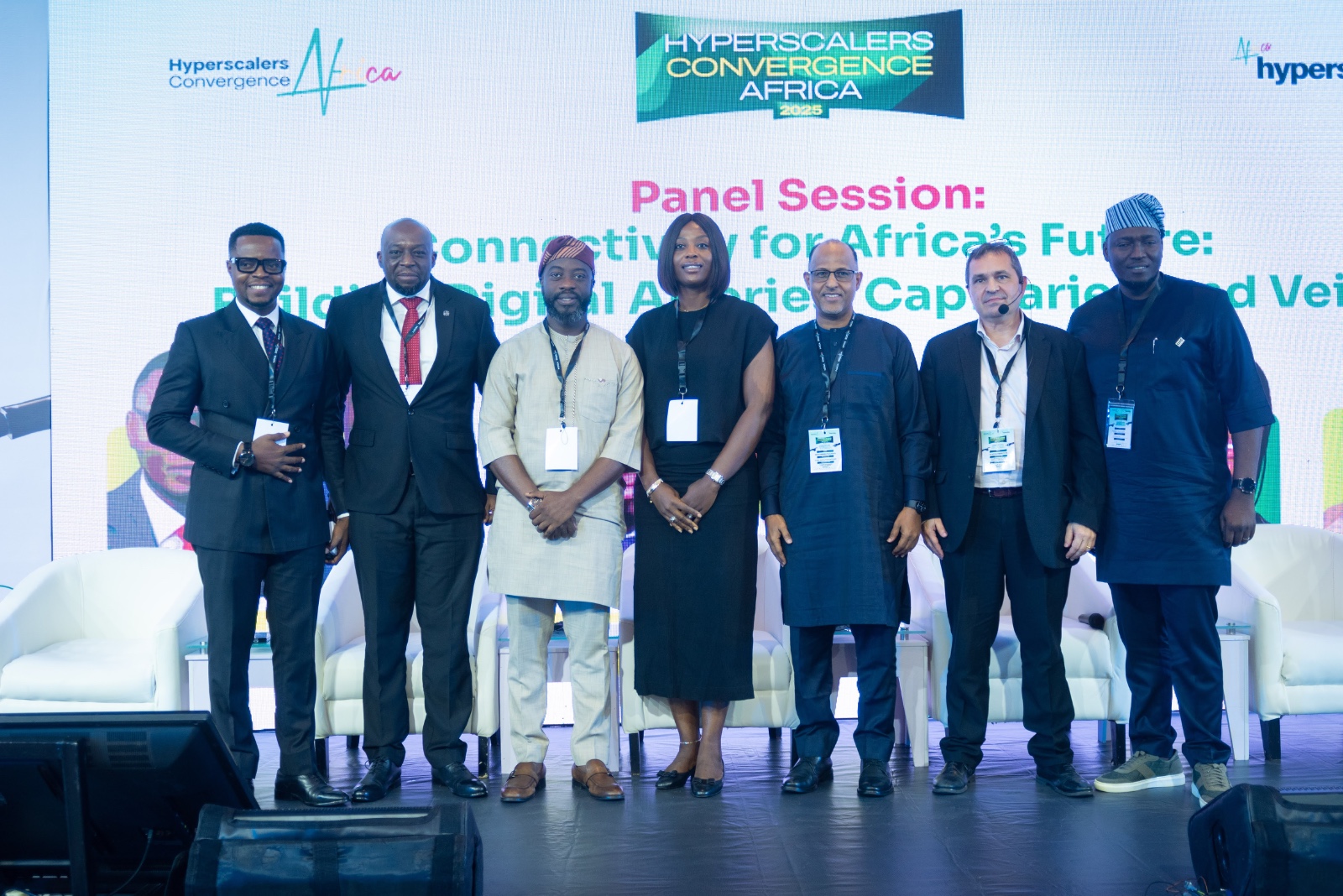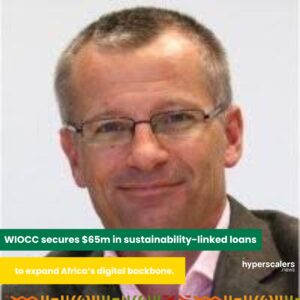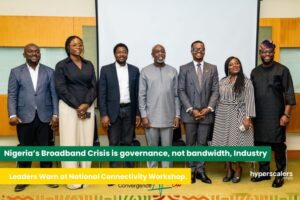Africa has abundant subsea bandwidth at its shores, but struggles to move bits from the beach to businesses and homes inland. That was the message from industry leaders at the Connectivity panel at Hyperscalers Convergence Africa conference, arguing that coordinated investment in national backbones, metro rings, and last-mile access will decide whether the continent meets rising digital demand.
Speakers included Akeem Adeshina, Chief Commercial Officer, IHS Nigeria (moderator); Otuya Okecha, Chief Executive Officer (CEO), Fibresol; Abayomi Adebanjo, Director, Legal (Global and Regional Business Affairs), Equinix West Africa; Muhammed Rudman, Chief Executive Officer, Internet Exchange Point of Nigeria; Marco Rebecchi, Country Manager, Nigeria and Ghana, Nokia; Josephine Awetefe Sarouk, Managing Director, Bayobab Nigeria; and Lanre Kolade, Chief Executive Officer, Koltronics Nigeria Limited.
The session used a biological analogy to frame the task ahead: subsea cables as the backbone, long-haul fiber as arteries, metro and last-mile networks as capillaries, and internet exchange points as veins that keep traffic flowing efficiently. Internet penetration across Africa remains roughly 40 to 45 percent, and fixed broadband sits below 6 percent, despite more than 200,000 mobile sites. Panelists said the priority must shift from coverage to capacity and quality, with policy, finance, and execution aligned to carry traffic from coastal landing stations to inland users.
“Collaboration across all infrastructure sectors is critical to ensure Africa builds relevant digital arteries, capillaries, and veins,” said Josephine Awetefe Sarouk, Managing Director at Bayobab Nigeria, MTN Group’s infrastructure arm. Nigeria has multiple subsea landings, including the high-capacity 2Africa system, she said, but domestic distribution is held back by middle-mile costs, inconsistent right-of-way fees, power constraints, and fiber vandalism. Bayobab is investing in national long-distance and metro builds and in estate-level fiber through FiberX, while working with regulators and power utilities to harmonize fees and improve energy reliability.
Duplication of routes is draining capital, panelists said. Sarouk cited co-builds between MTN and Airtel as a template for sharing costs and accelerating deployment. Adeshina added that bankable models require tower companies, wholesalers, and financiers to back shared assets rather than parallel builds.
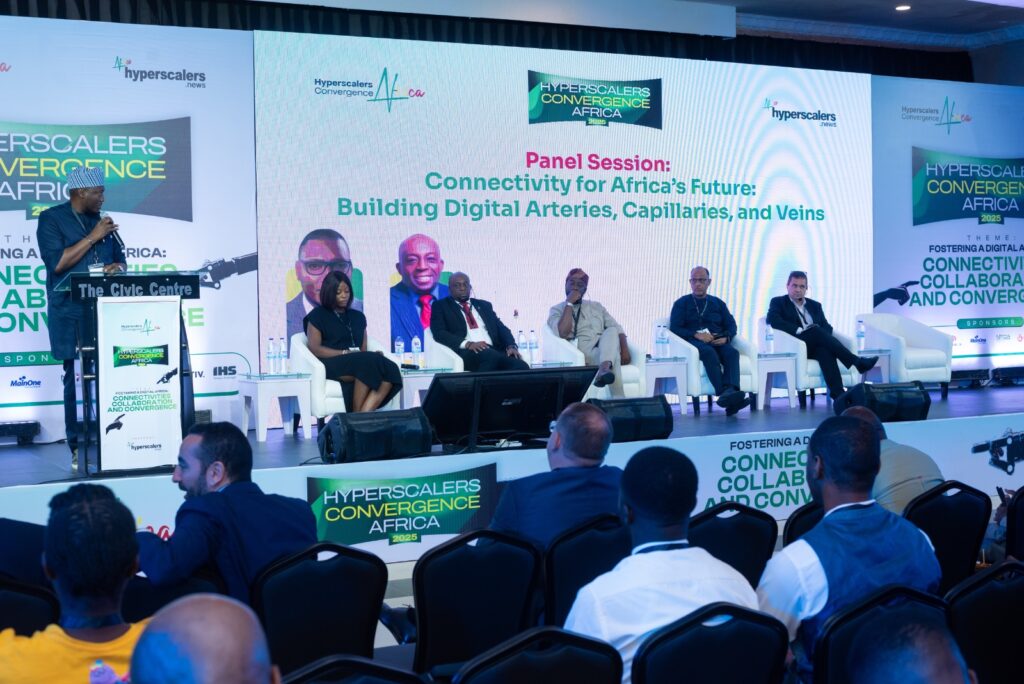
Project Bridge – the Nigerian government’s ambitious plan to deploy 90,000 kilometers of fiber nationwide through a blend of public funding, development finance, and private-sector execution – featured prominently in the discussion. “Project Bridge is happening, and its 90,000 kilometers of fiber will leapfrog Nigeria’s connectivity and provide a replicable model for Africa,” said Lanre Kolade, CEO, Koltronics Nigeria. He said localizing content and traffic, growing ISPs, and building data centers are essential to extract value from subsea capacity, reduce latency, and lower costs.
Fixed broadband will not scale without state and municipal buy-in, said Otuya Okecha, CEO of Fibresol. “Community networks are the heart of our digital future; connectivity must reach local government and ward towns, not just urban centers,” he said. With fixed broadband penetration below 1 percent in Nigeria, he reiterated, public-private partnerships with subnational governments are a necessity.
Policy will determine whether traffic stays local and whether investors commit capital at scale, said Abayomi Adebanjo, Director, Legal (Global and Regional Business Affairs), Equinix West Africa. “We need to focus on data residency, stronger local peering, and interim optimizations before Project Bridge fully comes online,” he said. Harmonized right-of-way rules and infrastructure sharing would improve the economics of interconnection and encourage hyperscalers to place more compute in-country.
On the access side, Muhammed Rudman, CEO, Internet Exchange Point of Nigeria, called ISPs “the veins” of the ecosystem. “ISPs are the veins of the network; bringing content closer to users reduces latency and cost while improving efficiency,” he said. He noted that moving traffic between Nigerian cities can be more expensive than sending it overseas because of fiber gaps, a distortion that Project Bridge aims to address. Satellite and other non-terrestrial options can help in the interim, he said, but quality at scale still depends on data centers and fiber backhaul.
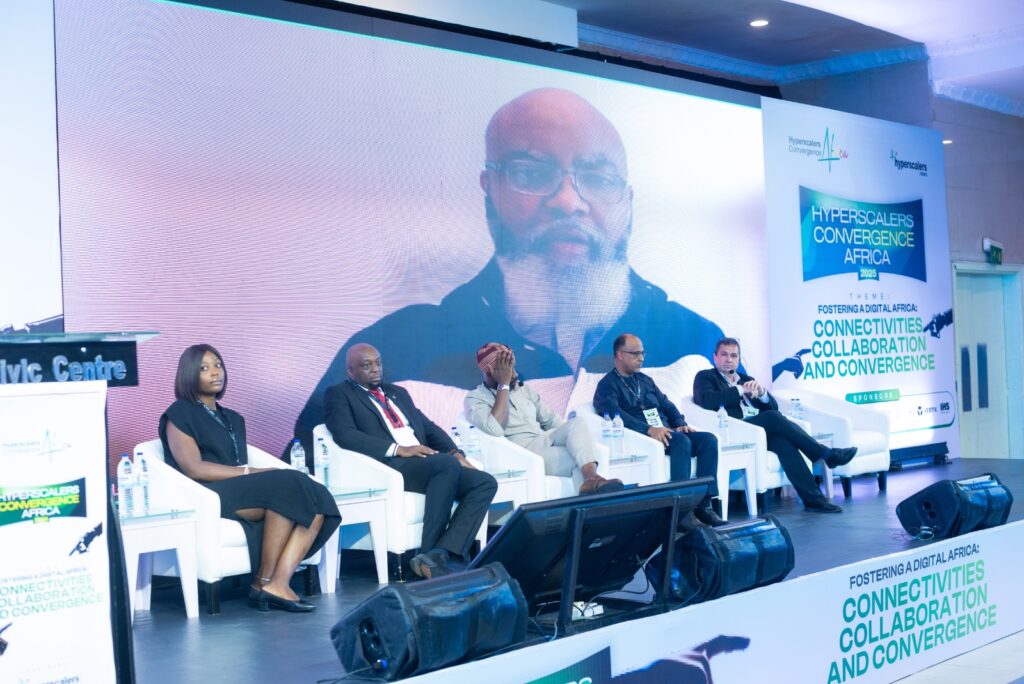
Last-mile solutions must fit local geography, said Marco Rebecchi, Country Manager for Nokia, Nigeria and Ghana. “Africa must achieve proper digital sovereignty with redundancy and local traffic management to fully realize its connectivity potential,” he said. In dense areas, he favored fiber-to-the-home, while fixed wireless and low-earth-orbit satellites can cover rural and hard-to-reach communities. Open-access and wholesale models, he added, can spread costs and speed adoption.
The panel closed with a short list of priorities: share more and duplicate less, fast-track Project Bridge under open-access terms, back PPPs at the state level, localize traffic through IXPs and regional data centers, use fixed wireless and satellite to bridge near-term gaps, and invest in the workforce needed to build and run the networks.
Speakers agreed that subsea capacity is no longer Africa’s bottleneck. The test now is whether operators, governments, and investors can coordinate builds and policies so bandwidth travels the last mile to homes, schools, clinics, and small businesses.
Hyperscalers Convergence Africa 2025 was convened by Africa Hyperscalers and sponsored by Nokia, Open Access Data Centres (OADC), IHS Towers, Vertiv, Equinix, and the National Information Technology Development Agency (NITDA).
Ready to dive deeper into the hyperscale revolution impacting Africa?
READ MORE HERE: www.africa.hyperscalers.news
Contact Us:
Email: projects@hyperscalers.news
Phone: +2348109003350
Follow us on Social Media: Instagram, Facebook, LinkedIn, x


